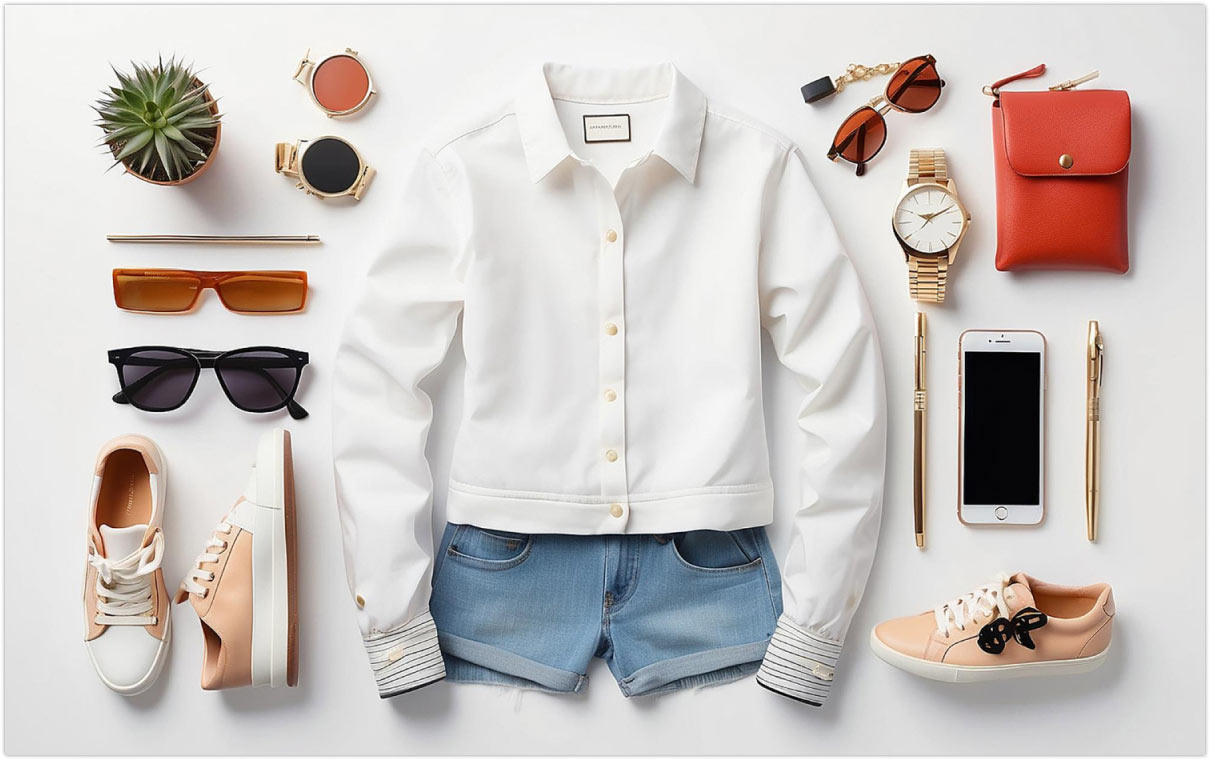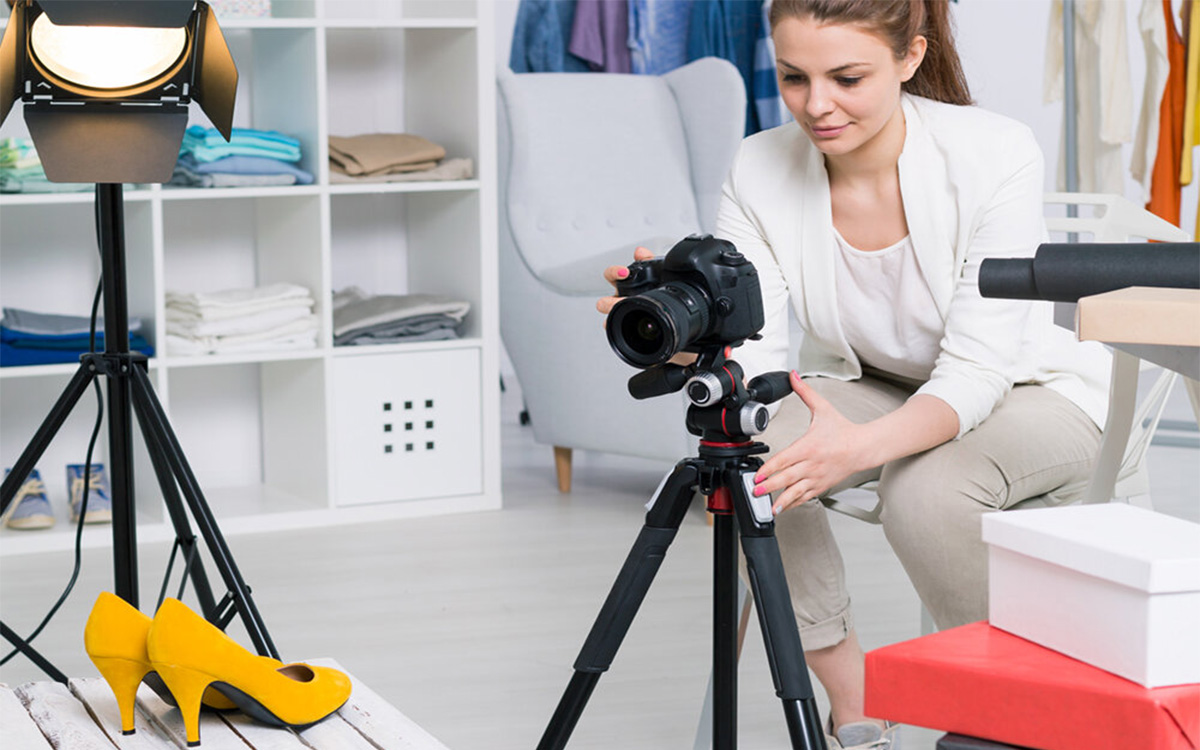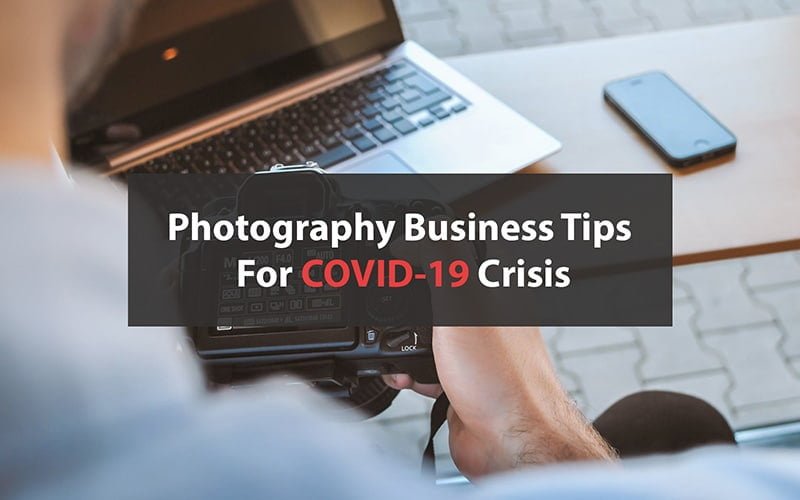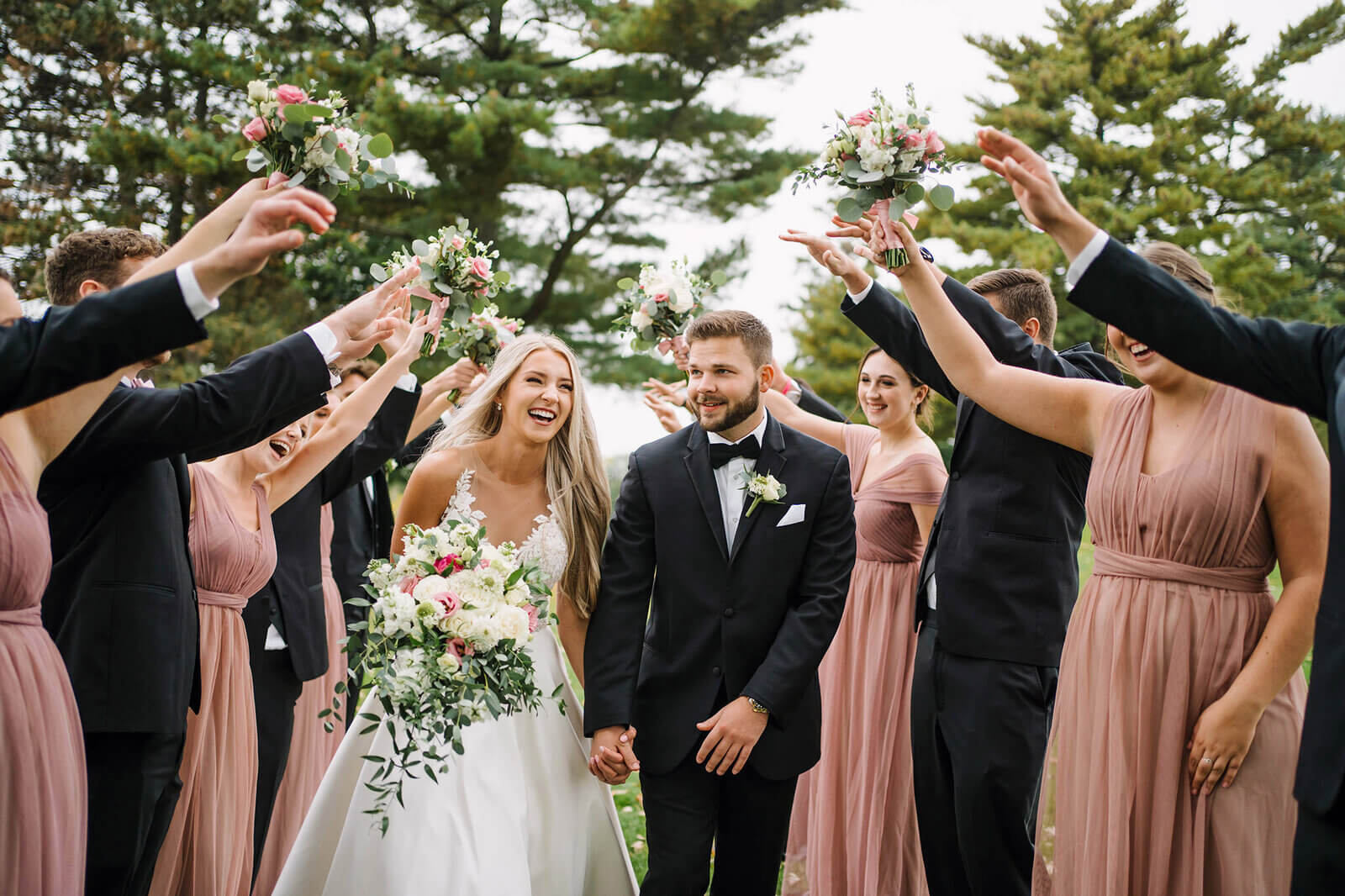Products come in all shapes, types, sizes, and variations. Those require different photoshoot setups, techniques, and editing processes to finalize the best look for online publishing.
One of them is the evergreen flat lay product photography. These are the most used shots of all time, from beginners to veterans. It may look simple, but it’s tricky and takes time to find the right frame.
In this article, I will help you capture the right flat lay product photography with ideas & tips, and a setup guide, and provide you with a list of 4 famous photography studios in the USA.
What you’ll learn in this article
- 1 What is Flat Lay Photography?
- 2 Benefits of Flat Lay Product Photography
- 3 14 Creative Flat Lay Product Photography Ideas and Tips in 2024
- 3.1 1. Create an Organized Shooting Plan
- 3.2 2. Creating a Well-Crafted Product Story
- 3.3 3. Assemble Your Props for Flat Lay Photos
- 3.4 4. Photograph Minimalist and Bold
- 3.5 5. Technical Considerations of Product and Image
- 3.6 6. Consider the Image Once It’s Finished
- 3.7 7. Experiment with All Layouts
- 3.8 8. Making Space for Text Around Your Product
- 3.9 9. Create the Pattern for the Photoshoot
- 3.10 10. Shooting Angles of Product Photography
- 3.11 11. Adding Drop Shadow for E-commerce Photoshoot
- 3.12 12. Use Horizontal Lines in Photography
- 3.13 13. Aesthetic Flat Lay Product Photography
- 3.14 14. Get Inspiration from Flat Lay Product Photographers
- 4 The Essential Equipment for Flat Lay Photography
- 5 What are the Best Practices for Editing Product Photography Flat Lay?
- 6 4 Famous Flat Lay Photography Services in the USA
- 7 FAQs about Flat Lay Product Photography
- 8 Conclusion
What is Flat Lay Photography?
The flat lay photography is the shooting technique where a product is put on a flat surface, creating a bird ‘ s-eye view, so the viewers can see the details of the product clearly and then take a shot of it either directly from above or slightly angle.
Mostly used for clothing photography, the flat lay is vibrant, satisfying, and popular for extending the visual landscape of the products. You can take flat lay shots not only for a single product but also for group photos, collage photos, or social media photos, each of which is widely used.
Benefits of Flat Lay Product Photography
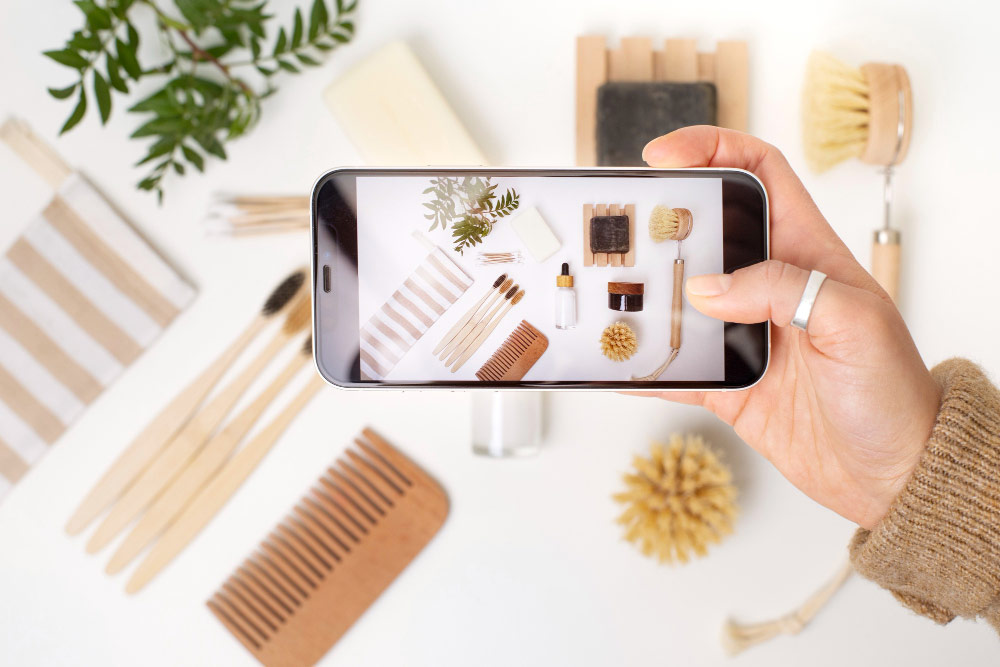
Flat lay photography has a long history and is always popular. Taking product shots while lying flat has its respective benefits as well. What type of benefits? Let’s get to know.
- Display product details
Products remain open at the full view when taking flat-lay shots. This means you put products on a flat surface, removing distractions. So, it offers viewers the maximum advantage of having a closer look at the product.
- Show additional items
Flat lay photo has a special perk, which is that you can show a variety of other products related to the main one. This can be a guide for the viewers to specify the purpose or if the products have other things in combination with them.
- Depict a story
With the flat lay photography setup, you can create a story by adding a few props. For example, if you are shooting clothing products, you can add a hat or a bag to make it look like it’s a piece viewers can use to go outdoors.
- Build trust among viewers
High-quality images accurately represent your product from different angles and assure the viewers of what deal they are getting. As a result, it offers transparency and relief of not being deceived, making the viewers check the product.
- Increase engagement & traffic
Flat-lay product images appeal visually, as they help grab attention by telling a story, shooting overhead, and making the subject appear at its best. So, when posting these photos online, if they are zoomable, enthusiast customers will check them out, resulting in increased engagement.
14 Creative Flat Lay Product Photography Ideas and Tips in 2024
Perfect shots come through skills, which derive from practices on different angles, lighting, shooting styles, locations, etc. If you do that frequently, you will find those types of satisfactory shots.
To help you get started, here are my top 14 tips for shooting flat lay product photography.
1. Create an Organized Shooting Plan
‘Well-planned is half done’, remember? Have a complete plan made in mind till the end. Start with location, the camera, types of shots, necessary props, extra light sources, low-light shooting, and post-production work- everything is planned ahead. Having a proper plan will help you not only save your time but also ensure backups in adverse situations and help you get the job done within the deadline.
2. Creating a Well-Crafted Product Story

As photography, flat lay takes different types of props in the setting (mostly, though, you can choose to shoot solo products as well). Understand the purpose and use of the product you are shooting. This will make it easier for you to craft the right story. Let’s say you are shooting a soap, then place a towel and perfume alongside it to offer a relaxed feeling of cleanliness.
3. Assemble Your Props for Flat Lay Photos
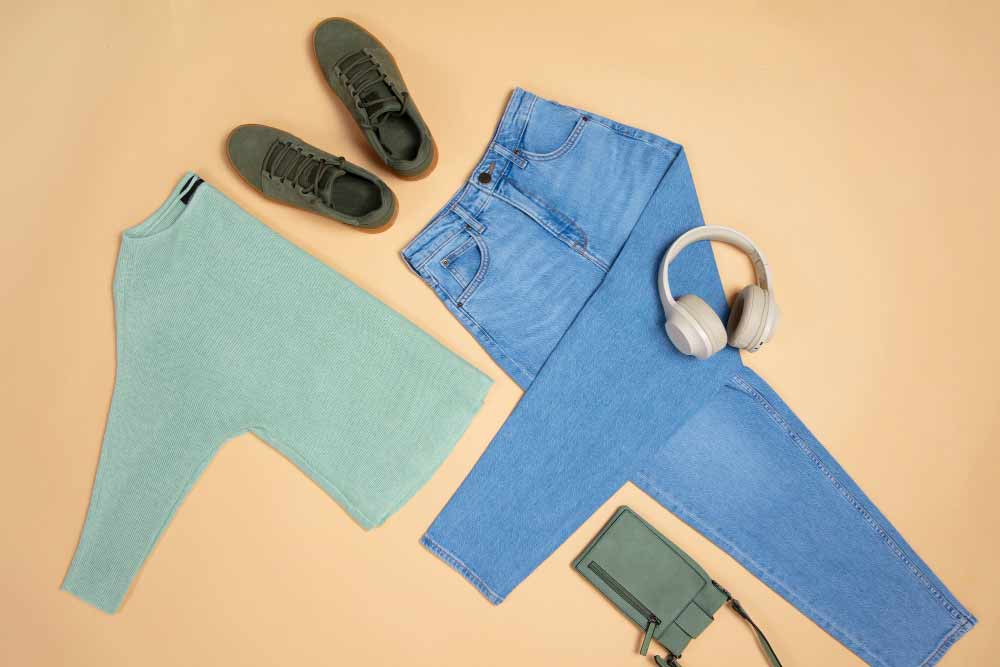
Many photographers feel confused about this. Will any type of props do? Yes, it does, but it’s better if you can relate the purpose. The reason for using props in the flat lay is to highlight the main products so that potential customers can choose their actions.
Tip: Here is how you can choose props. Research a bit about the target audience of the products, and their preferences. Then the relevant props will be easier to put into the frame.
4. Photograph Minimalist and Bold
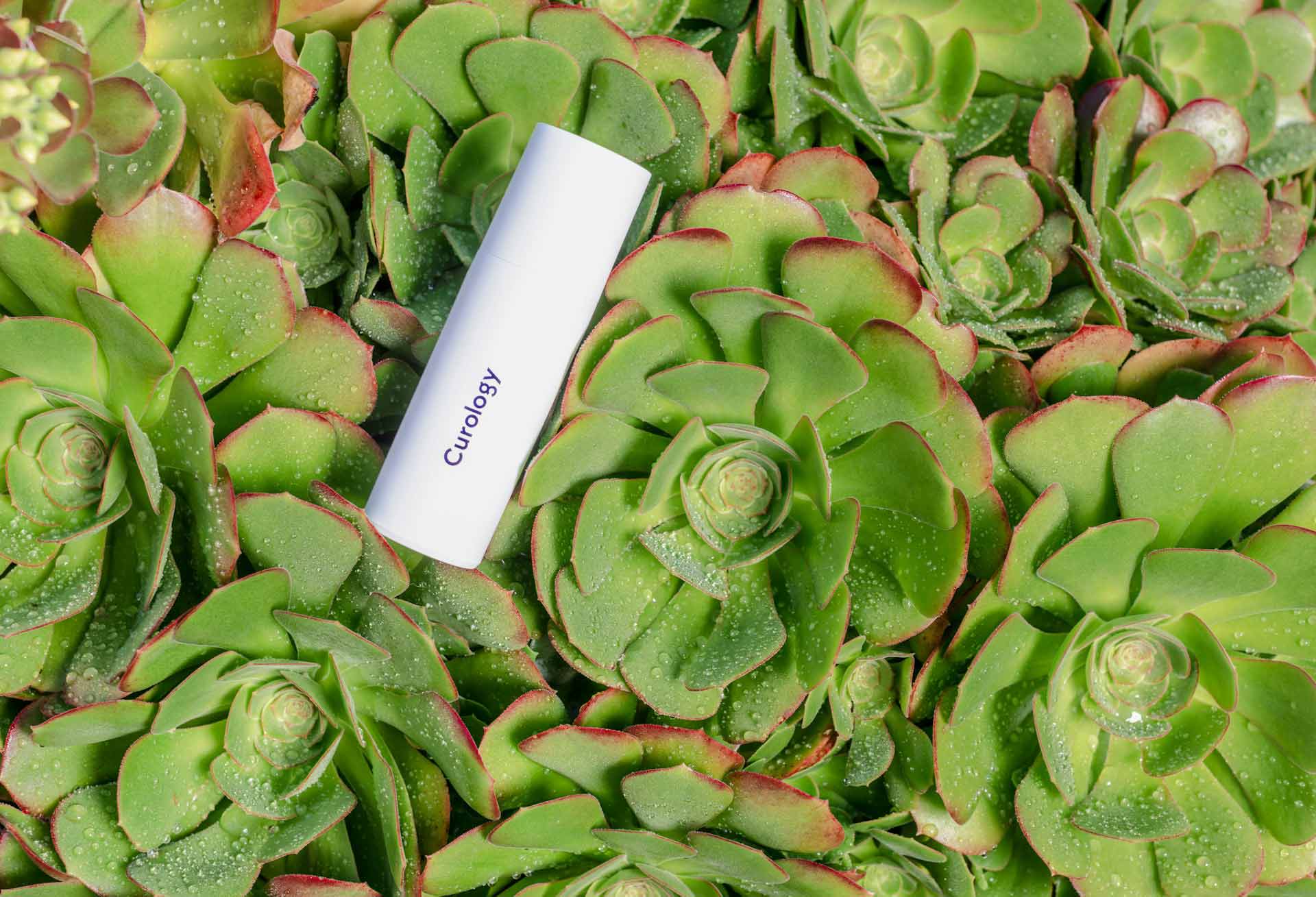
Minimalism is a popular concept in photography. Tell more by showing less. On the other hand, the boldness in photography is to create a big impact with a simple impact. By merging both concepts, you can create the subject look sharp and strong.
You can achieve the results by:
- Use negative space as much as you need.
- Experiment with different textures in the frame
- Prioritize monochromic color combinations
- Utilize different composition techniques rule of thirds, golden ratio, symmetry & pattern, etc.
5. Technical Considerations of Product and Image
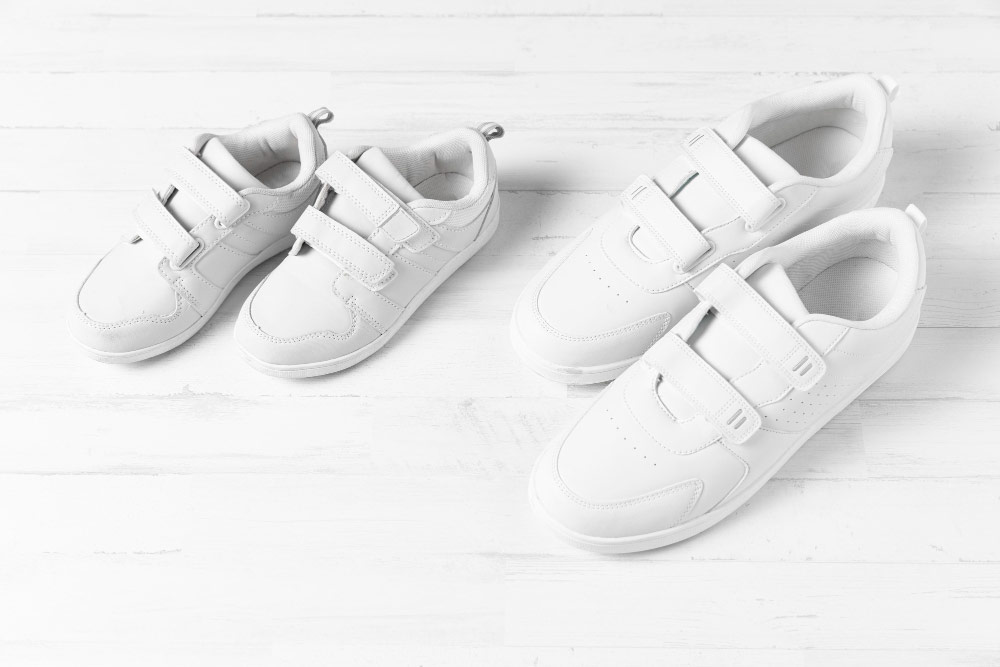
Yes, you can make flaws and imperfections go away in the post-production area, but not always. So, make sure the product is in pristine condition and looks shiny and clean. While shooting, the images are sharp, focused, and have a clean background; the image covers 80% of the frame, including shadow.
6. Consider the Image Once It’s Finished

When you have taken a shot, instead of going for the next shot, take a moment to analyze the image you just took a shot of. You will find that many decisions are clouding at certain moments, and many ideas will pop up as well. Take a mental note of what you want or not for the next images and proceed with that.
7. Experiment with All Layouts
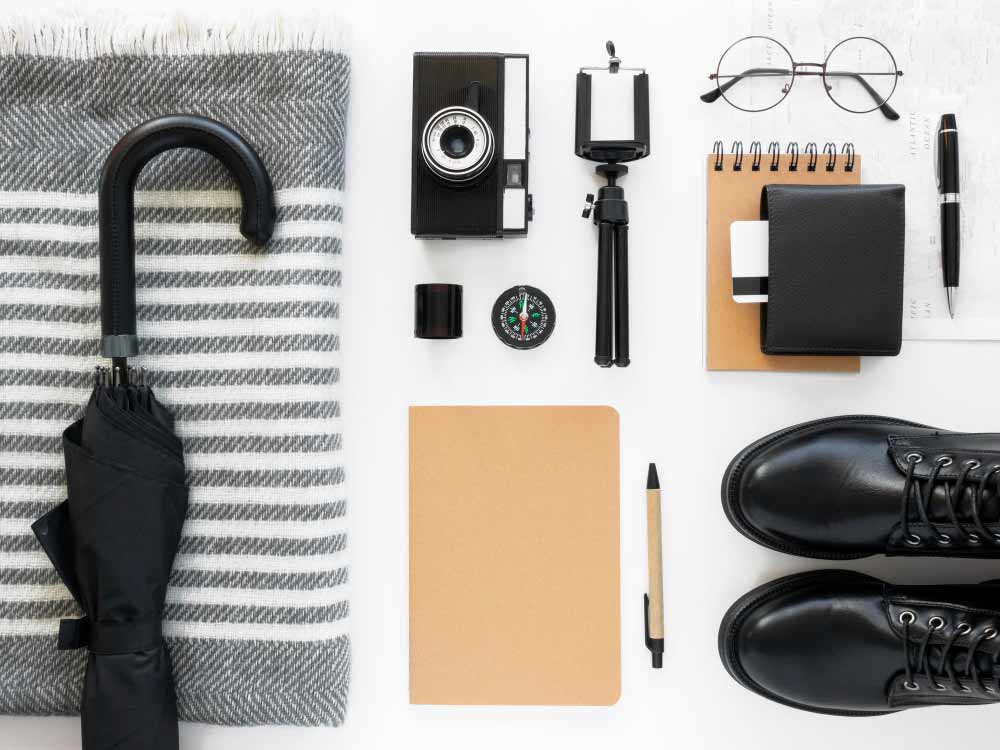
Flat-lay is about lying the product on a flat surface, though. But here is the twist. There are different ways you can shoot these images. Instead of just lying flat, how about taking some calculative shots? Such as:
- C-shaped flat lay: Organize products and props in a crescent shape.
- V-shaped flat lay: Place elements in 2 perpendicular lines with one intersection, like a V.
- S-curve flat lay: Dramatic placement of objects that look like an S.
- Parallel lines flat lay: Put all the elements into 2 straight lines.
- You can also try a triangular shape, circular shape, or square shape, depending on the product.
8. Making Space for Text Around Your Product
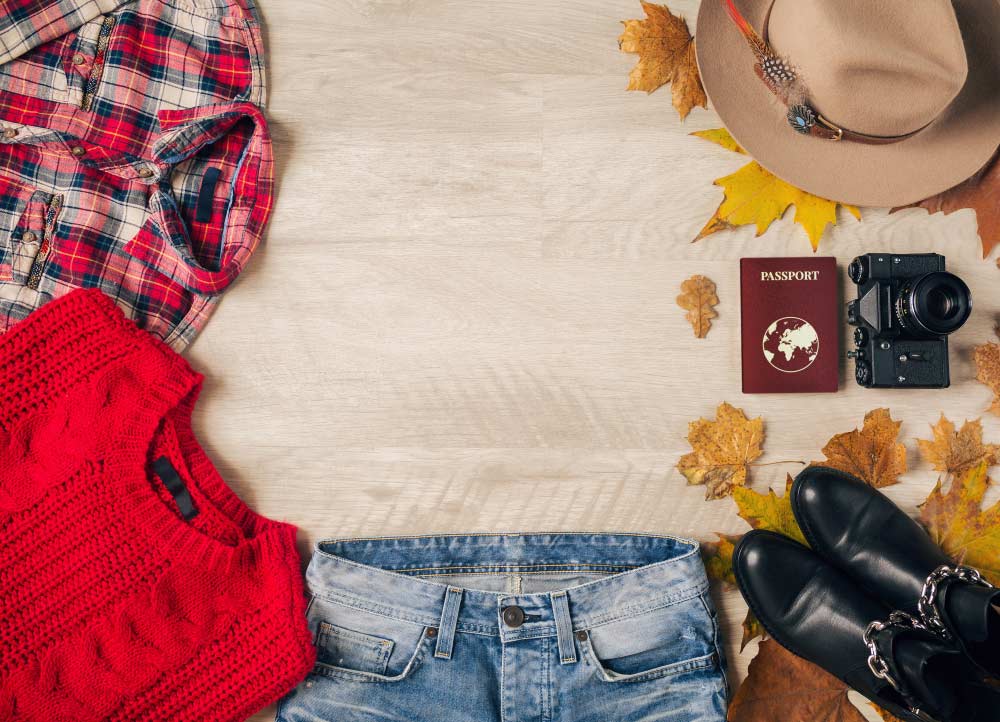
If you need to focus on the brand, you may either take the shot with the product or place the elements in a way that leaves an open spot for text. This way, not only will the product be visible, but the text will also appear noticeably.
9. Create the Pattern for the Photoshoot
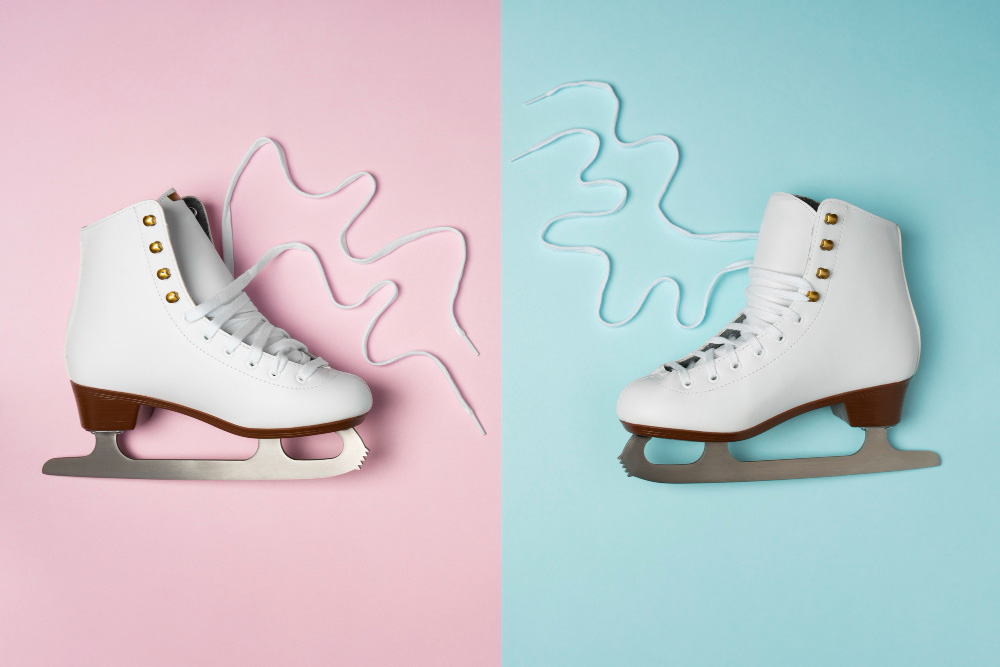
Using patterns in images is a smart decision, and it is worth it as long as you have the right organization in mind. There are different patterns, such as:
- Geometric: Combination of lines, angles, shapes, etc.
- Symmetrical: Repeating patterns of the same objects.
- Color: Using different colors in one frame.
- Or even pattern breaks if that’s what suits you.
It’s up to the product you are shooting and how the pattern arrangement brings out the best look.
10. Shooting Angles of Product Photography
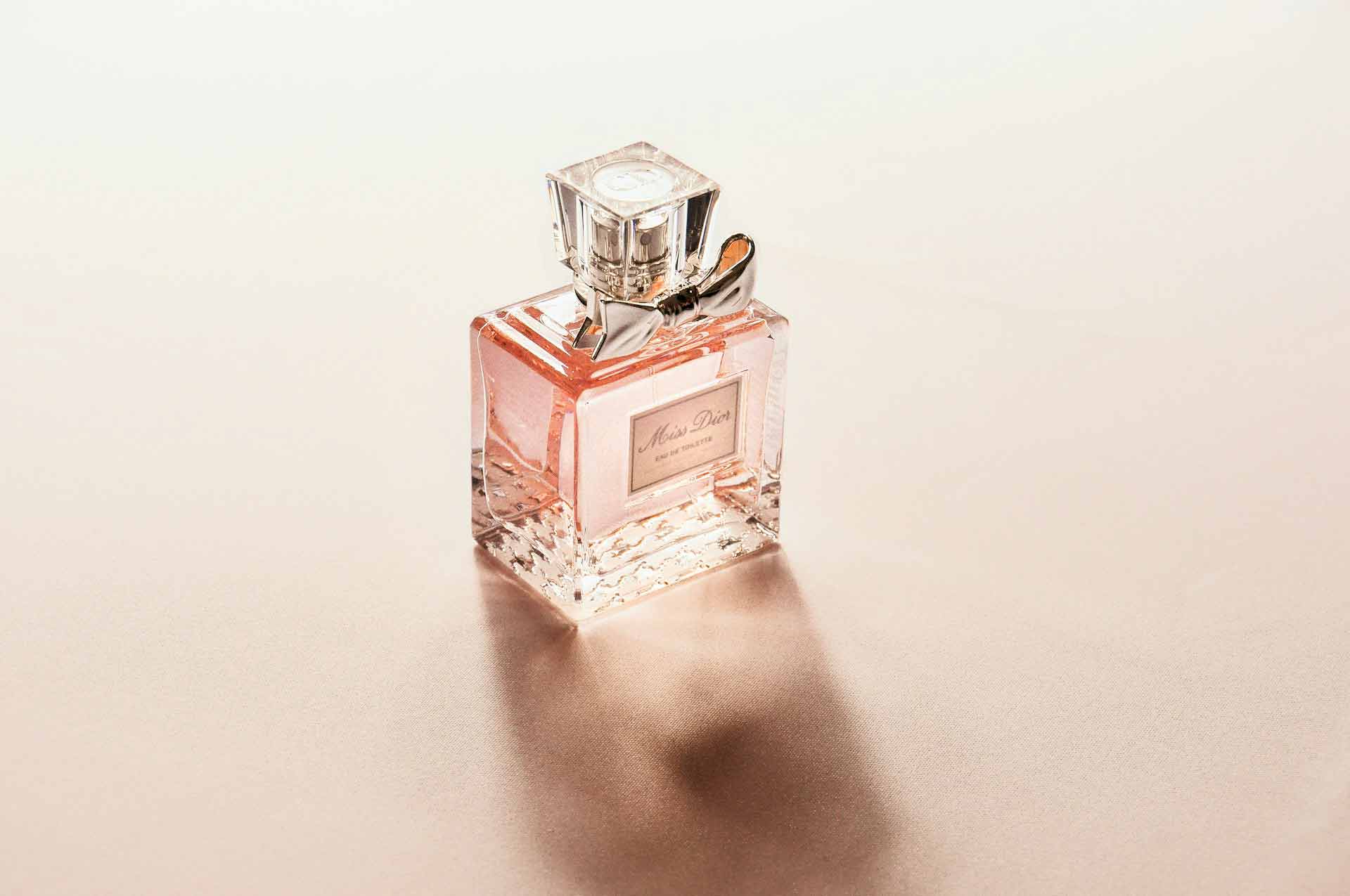
There are a lot of angles when it comes to photography, but it is limited to a few if you are shooting for a flat lay. Apart from the overhead shot, you can take angle shots from slightly upward, making sure the product is looking at its best. Also, take some close shots of the important aspects, features, or logos of the products.
11. Adding Drop Shadow for E-commerce Photoshoot
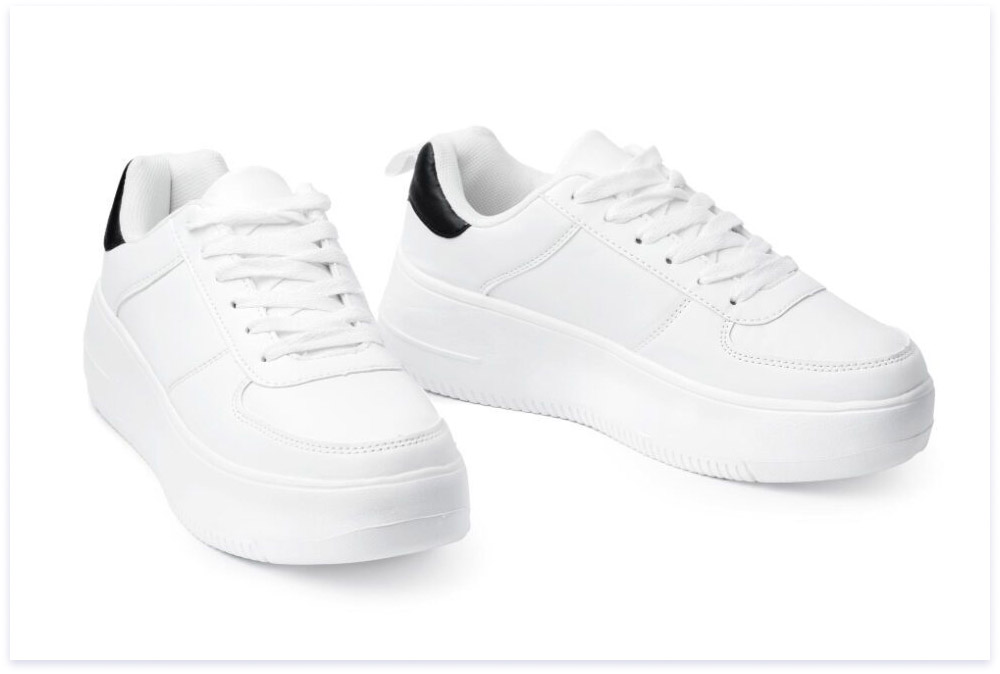
Drop shadow helps a product look more realistic and trustworthy. Unless your product is something completely flat like a piece of cloth, you will be able to cast a relevant shadow for the product. There are 2 ways you can cast a shadow.
- Placing a light diagonally to the product.
- Adding a shadow during the photo-editing session.
Either way, a relevant shadow will help your product give off the right message of authenticity.
12. Use Horizontal Lines in Photography

Using horizontal line placement creates a sense of symmetry and also creates interest and stunning images. You can use it for food photography, clothes photography, or any other products. As this technique adds balance and structure to the frame, viewers are guided to see the products the way you want them to.
Tip: Here is the idea of how you get the horizontal look in your flat lay shots.
1. Solid background, no distraction.
2. Long objects as props, such as phone cases, long items, rulers, spoons, etc.
3. (Optional) Colorized horizontal line with ribbon, and decorative tapes.
13. Aesthetic Flat Lay Product Photography
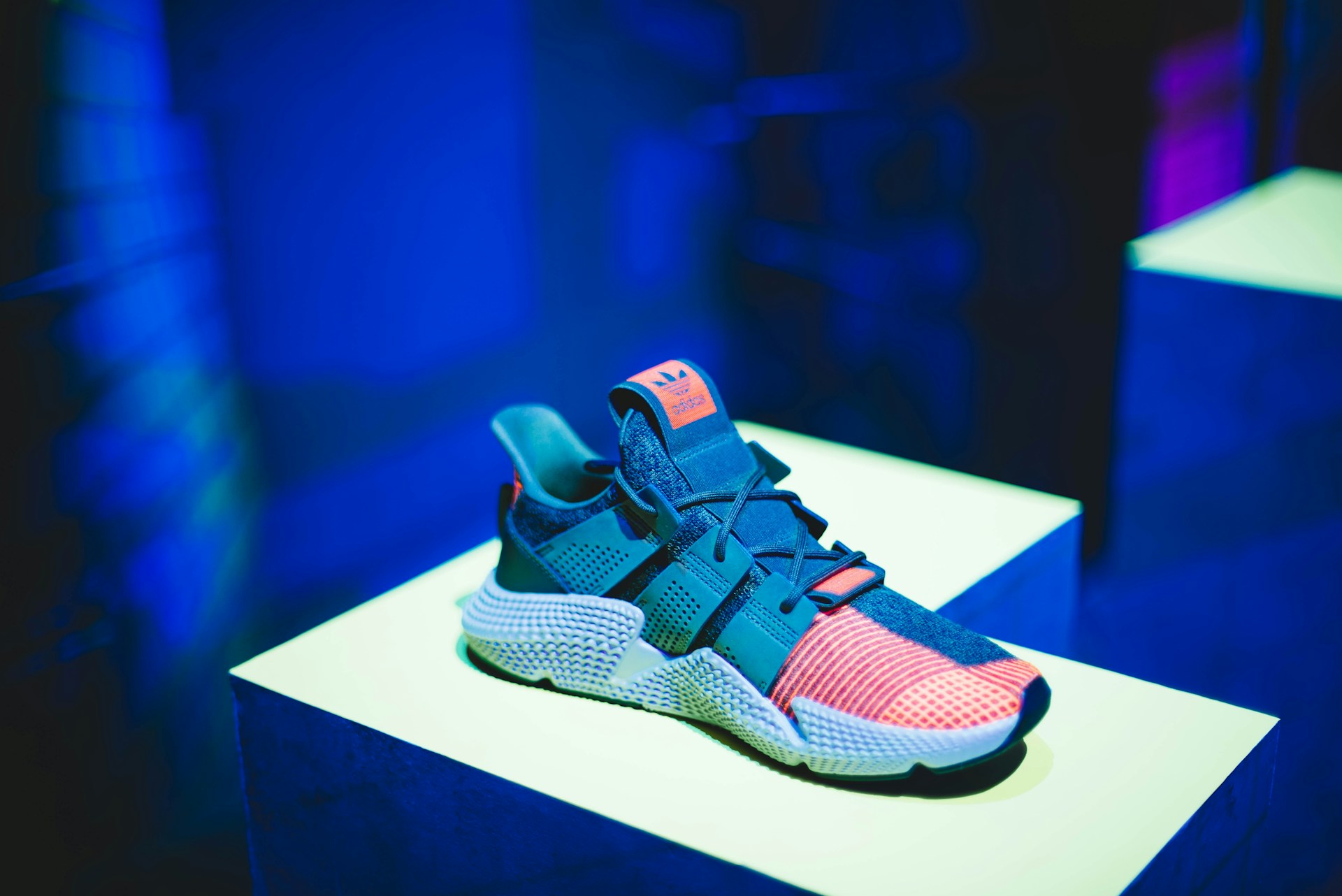
You can add aestheticism to your table-top product shots. For that, you need to come up with a concept that is good enough for the subject to get noticed, understand the need and preference for the product you are shooting, and take note of setup, color schemes, product styling, etc. Don’t be afraid to try out-of-the-box concepts. Who knows, maybe that’s where the magic lies!
14. Get Inspiration from Flat Lay Product Photographers
Ideation has no limit. So, take advantage of ideas that other photographers put into their works. Follow photographers’ community, their portfolios, different stock image platforms, or on Instagram and Pinterest for fresh ideas to come into view.
The Essential Equipment for Flat Lay Photography
There is a lot of equipment, and all of those are necessary. How do you decide which ones are the must-have? Okay, here is the trick. Divide your equipment into 2 categories: the one you will take and the one you leave behind if you are to shoot outdoors.
Back to the topic. Here are the top 6 essential pieces of equipment for flat lay photography.
1. Camera
You won’t need any fancy camera to shoot flat-lays. The most popular product photography camera will do the job, and so will your smartphone. Here is a list of product photography cameras.
- Panasonic Lumix FZ80 4K Digital Camera
- Canon EOS Rebel T6 Digital SLR Camera
- Canon EOS 5D Mark IV Full Frame Digital SLR Camera
- Nikon D7500 20.9MP DSLR Camera
- Nikon D810 FX-format Digital SLR Camera
2. Lens
There are a lot of options available for camera lenses if you search in the market. You can decide on the lens you need by checking on the following factors.
| Purpose | Creative, outdoor, action, or close-up shots. |
| Types of Lens | Macro lens, Prime lens, Zoom lens, Wide angle lens, etc. |
| Focal Length | 14mm – 35mm. 35mm – 85mm, 50mm etc. |
| Features | Auto & manual focus, image stabilization, weather sealing, chromatic aberration, etc. |
| Cost | The more features, the price of the product. |
It’s better to have a couple of lenses stored but it is not mandatory if you just started.
Similar to the camera, you can use the lens best for product photography. Switch lens deciding on photo perspective. Check out these most demanded product photography lenses that are on hype this year.
- Canon 100mm F2.8L Macro Lens
- Canon EF 50mm f/1.8 STM Lens
- Nikon AF-S VR Micro-NIKKOR 105mm f/2.8G IF-ED Lens
- Tamron SP 28-75mm F/2.8 XR Di
- Sigma has a 24-105mm f/4 DG
3. Lighting
Apart from natural lighting, there is a lot of artificial lighting you can use to ensure even lighting. Using artificial lighting benefits a photographer in terms of illumination, even during low-light situations.
Tip: Bright uniformly from all angles.
To enlighten the flatplay setup evenly from every angle, you need a key light, and a fill light. In some cases, a key light from the top will do the work just fine.
Here are some common lights you can choose from.
- Strobe
- LED Light
- Fluorescent Light
- Softboxes
4. Tripod
This equipment will help you put the camera frame in a steady position with absolute balance, not having any tremors or motion blur. Also, you get the advantage of consistent photos with long exposure and high resolution.
Here are some commercial photography tripods listed for you.
- Manfrotto MT055XPRO3
- Manfrotto’s 190x 3 tripod
- Vanguard Alta Pro 263AB
- ZOMEi T70
- Benro Rhino Carbon Fiber Zero Series Tripod
5. Backdrops
Here comes the ‘second lead’ of the scene. Yes, if your product is the main hero of the image, then the background or backdrop is the second lead. It should accentuate the charm and look of the product. So, what choice do you have for the photography backdrops?
Well, plenty. Here are some common backdrops that studio photographers use.
- Collapsible Disc
- Chroma Key backdrops
- Fabric (Muslin, Velvet, Polyester, etc.)
- Paper rolls (Design, Plain, etc.)
- Digital Prints
- Canvas & Vinyl
- Wooden Board
6. Props as Required
Depending on your product and setup, prepare some props. No need for something fancy that you need to spend money on. It can be anything you find around you: a book, a pair of shoes, an artificial flower stick, etc.
The role props play is to fill the scene or complement the story you are framing. Again, this isn’t mandatory, but rather equipment to add value to the scene.
What are the Best Practices for Editing Product Photography Flat Lay?
The best practices are the sets of rules that help get the supreme results. There are many things to consider when editing flat-lay photos. Here are a few practices that you should consider.
Shoot Raw Photos
Raw photos are easy to edit, and they don’t get distorted or lose resolution while editing. As there is no guarantee that a commercial-grade photo won’t need editing, it is better to shoot raw photos. A slight touch of editing will elevate the overall look of your product image.
Don’t Overedit
While editing, you will see all the options seem important, color correction, background editing, shadow placement, special effect adding, etc. But don’t fall for that temptation. It may make the product look something utterly different than the actual look. So, aim to look at editing.
Crop if Needed
You might have taken shots of a frame with a lot of props, and it seems to have a picture-perfect look. But suddenly, it seems the image will look better if there are fewer props. Don’t hesitate to crop it. Cropped images may have a better interaction rate than the actual images as it helps shift the focus on the product.
Cleanup Imperfections
During photoshoots, many imperfections aren’t visible to the naked eye, or even if visible, you can’t delete the shots. So, what you can do is eliminate the imperfections, distractions, or flaws that have become the eyesore.
Outsource in Emergency
If you aim to become a professional photographer, you need more practice to make accurate shots and pay attention to the clients. Therefore, your time will be limited. So, my suggestion is to exchange editing for time. Outsource photo editing services whenever you are in an emergency. There are reliable photo editing companies available you can count on for industrial-grade editing solutions.
Get Flat Flay Product Photo Editing
4 Famous Flat Lay Photography Services in the USA
If you are looking for a US-based photography studio, check this list out. All of these photography service providers have made their name through their hard work, and you can count on them.
1. Damion Lloyd
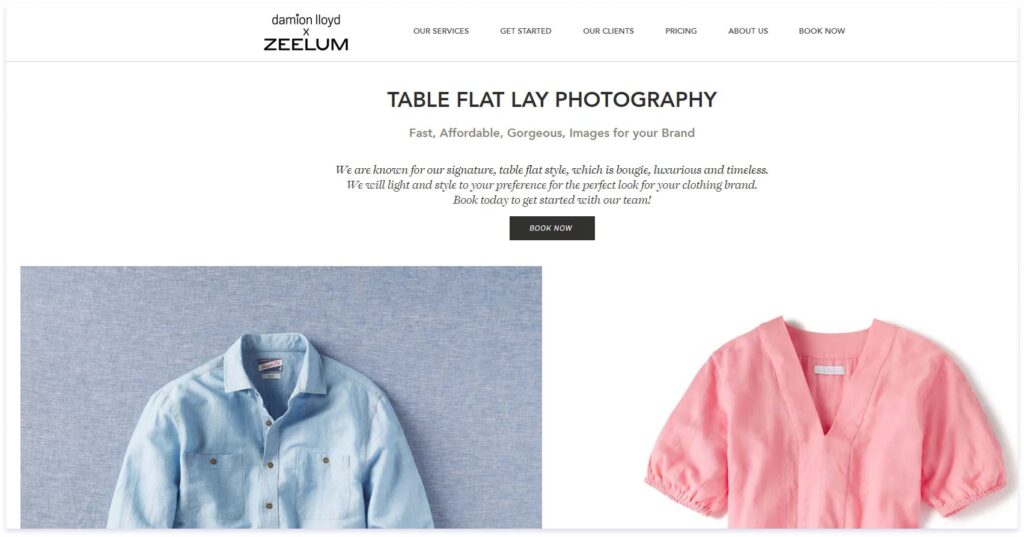
Damion Lloyd is a team of talented photographers who offer creative styling in table-top photography. Together with Zeelum, it ensures consistent, accurate, and speedy project output. Regardless of your company size, Damion can fit the style and vibe and provide quality work at its best.
| Pros | Cons |
| Wide range of ecommerce photoshoots | Project minimum $800 for new and $ 500 for existing clients |
| Standard turnaround time (5-12 business days depending on volume) | 50% deposit is needed |
| No usage fee | |
| No additional or hidden costs | |
| Delivery is through FedEx, UPS, USPS, Lyft, Uber, in-person, etc. |
2. Space and Light
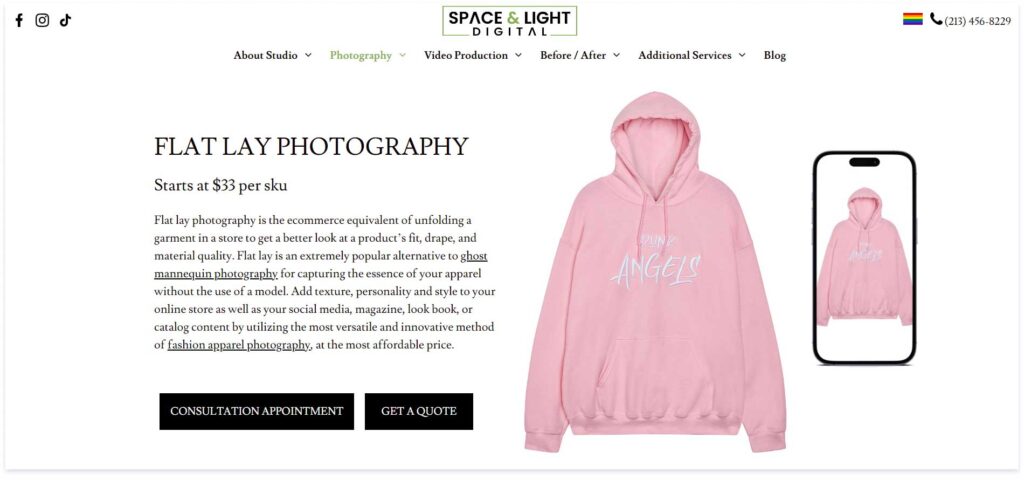
Since being established in 2002, Space and Light Digital has offered creative direction, fashion photography, video production, and a wide range of services catered to business. It has collaborated with over 580 US brands and executes the best, dynamic, and eye-candy product photoshoots.
| Pros | Cons |
| Photography for different marketplaces like Amazon, Social, Mailchimp, ecommerce platforms, etc. | 100% rush fee applicable |
| Photography diversity includes commercial photos, lookbooks, editorials, catalogs, and so on. | MOQ is 10 SKU or $350 |
| Receive any courier services | |
| Turnaround is 2 to 3 business days depending on complexity and size |
3. Squareshot
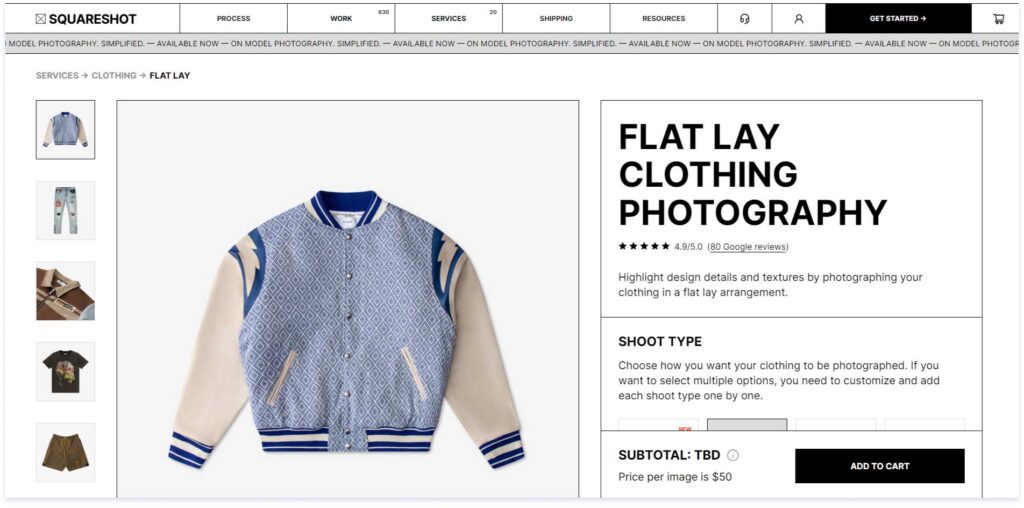
Squareshot is an on-demand product photography service provider across the US. With a talented and experienced team of professional photographers, it offers high-quality, fast, and easy photography project completion.
| Pros | Cons |
| Every image includes standard retouching | Doesn’t issue refunds |
| Turnaround time is 3 to 8 business days depending on the projects | |
| Membership plans offer lower pricing, minimum turnaround, and no MOQ | |
| Accepts revisions within 10 calendar days | |
| Offers remote approval, remote shoot, and free or paid revisions based on situations |
4. VSP Studios
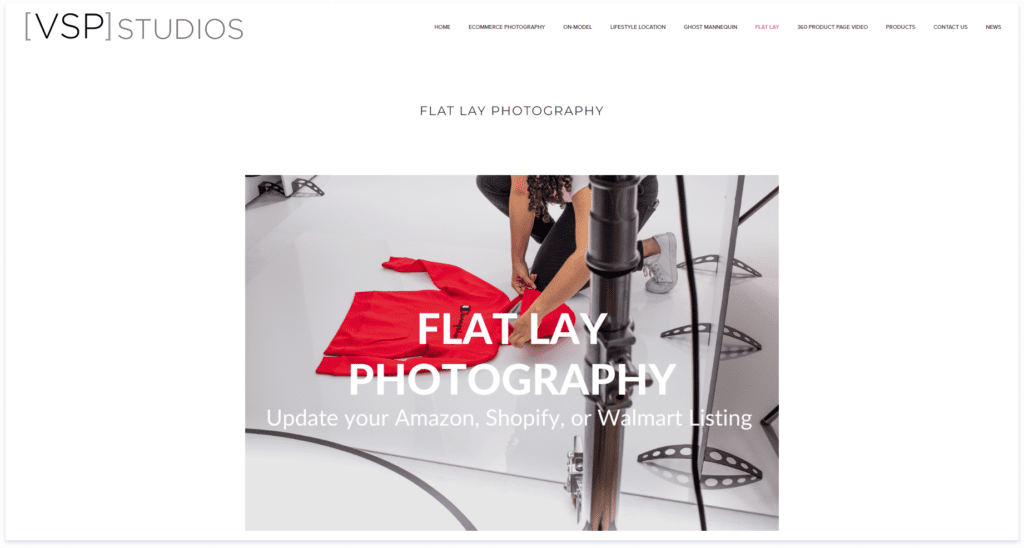
VSP Studios is a full-service professional photo and video content service for fashion products. With 25 years of experience, it has been creating top-selling fashion product images for brands from luxury fashion to boutique style retailers.
| Pros | Cons |
| Offers web-ready images of high-resolution | None |
| Includes front, back, and details | |
| Clothing products are steamed to ensure quality | |
| Products are on a white background (unless requested) | |
| Provides discounts for large-volume orders |
FAQs about Flat Lay Product Photography
What is knolling in flat-lay photography?
Knolling is a type of flat-lay shot where products are organized in a way on a flat surface parallel or 90 degrees symmetrically. It helps create visual uniformity.
What is flattening in photography?
Flattening in photography is a perception technique that makes the subject appear closer when it is far away, and thus, it creates a dramatic scene.
What composition is best for flat-lay photography?
The best composition techniques for flat lay photography can be the rule of thirds, symmetry u0026amp; pattern, golden ratio, etc.
What aperture should you use for flat-lay photography?
Start with aperture f/8 and then increase towards f/11. Aperture is measured through ‘f-stop’. A small aperture takes less light and dark images, and a wide aperture allows for more light and well-lit images.
What ISO range you should use for flat-lay photography?
Aim for ISO 100 to 200 to shoot your product for a flat lay. ISO is how much light can get inside the camera. A higher ISO means less light and a low ISO means more light than the camera needs for an image.
Conclusion
Flat lay product photography isn’t a complicated type of photography; rather, I would say this is one of the easy yet entertaining types. I consider this as a type of mind game because all the ideas for the setup happen in your mind.
Follow the tips I mentioned earlier. I hope you will find your way to the photoshoot, and as you practice, your skills will be top-notch.
Keep up the good work, and keep an eye on our blogs for more beginner guides to upgrade your skills to the veteran photographer’s level. See you soon!
